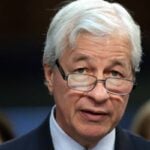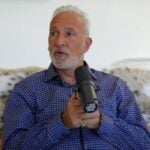While inflation may have slowed as of late, that doesn’t mean prices have dropped — they’re just not climbing as quickly as they were in 2022.
Prices remain so high that even Robert Kiyosaki, author of Rich Dad, Poor Dad, is feeling the squeeze.
“I just purchased an egg salad sandwich for my dinner in Waikiki. Price $14.00,” he shared in a post on X. “I can afford $14 yet the price still is hard to swallow.”
With an estimated net worth of US$100 million, Kiyosaki’s surprise at the cost of a simple sandwich underscores the high cost of living many are facing today.
In the same post, Kiyosaki expanded on the issue:
“THE EVERYTHING BUBBLE I wrote about in my last two tweets has caused millions of Millennials, Gen X and Gen Zs… even a few Baby Boomers[…] to claim they cannot afford a house, or have kids, or live at the same standard of living as their parents.”
Kiyosaki expressed empathy for younger generations, noting that he grew up with similar doubts. Yet, with “real estate and the cost of living so high in Hawaii,” he also wonders how “young people today… survive.”
The cost of living crisis isn’t limited to Hawaii, or even the U.S. Across Canada, inflation continues to bite. Canada’s consumer price index was up by 1.8% in December 2024 from December 2023.
‘The everything crash’
Kiyosaki’s concerns about inflation go beyond just rising consumer prices — he’s also warning of a major market downturn.
He described on X how “The Everything Bubble” formed in the past.
“In 2008 was the GFC the Great Financial Crisis. The criminals at the Fed and Treasury began printing trillions of fake dollars in an attempt to stop a GFD a.k.a….a Global ‘F-ing’ Depression,” he wrote. “The 2008 GFC blew up into ‘The Everything Bubble.’ All markets began to rise….floating on a sea of fake money.”
In short, Kiyosaki believes that excessive money printing fueled the bubble by inflating asset prices across the board.
Now, he predicts even more serious consequences.
“What I am attempting to say is ‘The Everything Bubble’ is going to turn into ‘The Everything Crash,’” he predicts, vividly comparing the impending collapse to “Mt. Vesuvius blowing up.”
While the Canadian stock market experienced a remarkable rally in 2024, with the S&P/TSX composite index ending 18% higher for the year, Kiyosaki points out that savvy investors are already offloading overpriced assets and moving into cash.
He highlighted Warren Buffett, whose company Berkshire Hathaway has sold a significant portion of its Apple (APPL) shares this year. “Warren Buffett is selling even his Apple shares and sitting on stacks of cash,” Kiyosaki notes.
‘Prices about to explode’
So, how do you navigate the bubble and the impending crash? Kiyosaki points to three key assets.
“If a major stock market crash occurs. Which I am expecting… Because the stock market has been high for too many years… This is not good news for people who do NOT own gold, silver, and Bitcoin,” he warned on X.
This isn’t the first time Kiyosaki has promoted these assets. His confidence in them remains strong, boldly declaring that “Bitcoin, gold, silver prices [are] about to EXPLODE.”
Gold and silver have long been considered popular hedges against inflation. The reason is straightforward: these precious metals can’t be printed in unlimited quantities by central banks like fiat money.
And because their value isn’t tied to any one currency or economy, these metals could provide protection during periods of economic uncertainty.
In October 2023, Kiyosaki predicted on X, “Gold will soon break through $2,100 and then take off. You will wish you had bought gold below $2,000. Next stop: gold $3,700.”
It seems that the first part of his prediction is materializing. Gold prices have surged in 2024, now hovering around US$2,871.74 per ounce.
Kiyosaki is also bullish on silver, recently telling followers that “BEST ASSET TODAY: Silver… buy it before it hits $50.00.” With silver currently trading at $34.40, his target suggests a potential 45% upside for the metal.
Bitcoin is another hot asset in 2024, having surpassed the US$96,000 mark amid bullish sentiments.
While some see Bitcoin as the new gold, Kiyosaki doesn’t dwell on comparisons between the two. “It really matters little which is better, gold or Bitcoin. That would [be] like people discussing which car is better… Ferrari or Lamborghini… as they take the bus,” he wrote on X.
However, Bitcoin’s volatility is something Kiyosaki acknowledges. He warns that the cryptocurrency could crash to $5,000 before surging to $100,000, $250,000, or even higher.
Still, Kiyosaki paints a clear picture of the future for those who own these assets.
“Those who own real gold, silver, and Bitcoin will get richer… [and be] able to afford Ferraris or Lamborghinis… while talkers who take the bus… say to themselves… ‘I really do not like either Ferraris or Lamborghinis,’” he quipped on X.
Sources
1. Statistics Canada: Consumer price index portal
2. CP24: S&P/TSX composite ticks higher to close out a strong 2024 (December 31, 2024)
3. American Hartford Gold: Interactive Gold Price Charting Tool
4. The Globe and Mail: Crypto Market Surges as Bitcoin Breaks $96,000 Amid Bullish Sentiment (Jan 21, 2025)
This article provides information only and should not be construed as advice. It is provided without warranty of any kind.






